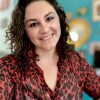Sanofi looks to follow a deep history of Big Pharma offloading their consumer healthcare businesses.
When Sanofi announced last week that it plans to sell a 50% controlling stake of Opella, its consumer helath business, the disclosure echoed similar moves by other Big Pharma companies, including Johnson & Johnson, GSK, Pfizer and Novartis.
Just last year, J&J split off Kenvue, creating a standalone company to house iconic brands like Tylenol and Benadryl. Novartis did the same with its generics and biosimilars unit Sandoz as well. But if you look back even further, Roche was the first Big Pharma 20 years ago to portion off its consumer work and hand it off to Bayer.
Sanofi is now looking to make a similar move, selling Opella to a private equity firm. The company first set up its consumer healthcare section as a standalone global business unit in 2019, seemingly prepping it for a full spin out at some point, while streamlining down to only priority brands. Those under the Opella banner include seasonal allergy medication Allegra, topical pain relief line IcyHot and constipation drug DulcoLax. As of 2023, the unit had revenue of €5.2 billion ($5.7 billion), with a presence in 150 countries with 11,000 employees.
Sanofi telegraphed the split from the consumer healthcare unit a year ago as part of its October 2023 “Play to Win Strategy.” Specifically, the company announced a plan to separate the consumer business entirely and shift its focus to innovative medicines and vaccines. The move would create two separate entities, “each better equipped to pursue its own business strategy,” according to the release, which noted that the separation could happen by the fourth quarter of 2024. And here we are, the final quarter just beginning, and Sanofi is in earnest talks with a potential buyer for Opella.
As we wait for that story to unfold, BioSpace takes a look back at how this sort of transaction has gone previously.
Kenvue
Former parent: Johnson & Johnson
New ownership: Standalone company
Date of split: August 23, 2023
Brands: Tylenol, Zyrtec, Nicorette, Benadryl, Motrin
2023 revenue: $15.4 billion
YOY growth: 5%
Kenvue spun out of J&J in August 2023, marking a “historic moment,” according to newly-minted CEO Thibaut Mongon. J&J still has a stake in the company, but Kenvue is otherwise independent. A debt offering and the IPO raised $13.2 billion. When announcing the spin off, J&J CEO Joaquin Duato said the separation “sharpens” the healthcare company’s focus on innovation in pharma and medtech.
The separate company is now the largest pure-play consumer health company by revenue, known for brands such as Tylenol, Neosporin, Johnson’s baby soap, Listerine and Neutrogena.
Kenvue planned to spend 2024 investing in its brands and boosting prominence on store shelves. Mongon said during a second-quarter earnings call, “Earlier this year, I committed to you that you would see a new Kenvue, the bolder company that is moving quickly to advance our three priorities to reach more consumers effectively, invest further behind our brands, and build a culture of performance and impact.”
Sandoz
Former parent: Novartis
New ownership: Standalone company
Date of split: October 4, 2023
Brands: Generics, biosimilars
2023 revenue: $9.6 billion (reported as net sales)
YOY growth: 11%
Wanting to focus 100% on innovative medicines, Novartis spun off the Sandoz unit, which manufactures generics and biosmiliars, just over a year ago. This transaction was a little different from the others on this list, as Sandoz exclusively manufactures prescription medicines, but it gets lumped in with the rest when talking about major pharmaceutical companies calving off massive portions of their business to focus on innovation.
In 2023, Sandoz launched biosimilars for AbbVie’s Humira and J&J’s Stelara. This year, it’s launched a generic for chemotherapy drug paclitaxel and a biosimilar of Regeneron’s Eylea, among many others.
CEO Richard Saynor boasted during a second-quarter earnings call in August that Sandoz had grown for the 11th straight quarter.
But he also foreshadowed changes that could impact employees, with a multiyear program underway to reduce costs by $200 million annually by 2026.
“Coming out of a large pharmaceutical company with a much more complex and layered infrastructure we have plans to reduce layers across the organization and simplify our processes,” Saynor said.
Haleon
Former parent: GSK/Pfizer
New ownership: Standalone company
Date of split: July 18, 2022
Brands: Sensodyne, Advil, Voltaren, Theraflu, Centrum
2023 revenue: £11.3 billion ($14.7 billion)
YOY growth: 4.1%
GSK’s consumer healthcare unit was said to be worth $36 billion at the time of the demerger, which was announced in early 2022. CEO Emma Walmsley said the spin out was coming as the U.K. pharma planned “the most significant corporate change for GSK in the last 20 years.”
The unit was formed through a series of M&A deals and divestments, and was partly owned by Pfizer at the time of the sale. GSK held a majority 68% interest while Pfizer had 32%. Brian McNamara, previously the chief of the consumer division at GSK, was put in place as CEO, a role he still holds.
Haleon recently upped its stake in a Chinese joint venture called Tianjin TSKF Pharmaceutical, adding another 33% equity interest, and divested ChapStick and other brands, along with a handful of nicotine replacement products.
“We love the portfolio we have. We don’t believe we need to do anything with the portfolio to deliver on our guidance that we have given. But that said, we want to proactively and actively manage the portfolio,” McNamara said. He promised that as certain products are offloaded, his team is keeping an eye out for bolt-on M&A opportunities.
Both GSK and Pfizer have been lowering their stakes in Haleon in recent months, with Pfizer’s share dropping from 32% to 24% in March, while GSK’s has fallen to just 4.2% ownership.
Consumer health business
Former parent: Merck KGaA
New ownership: Proctor & Gamble
Date of split: December 1, 2018
Brands: Neurobion, Nasivin, Bion3
2023 revenue: N/A
YOY growth: N/A
Germany’s Merck KGaA sold off its consumer health unit to Proctor & Gamble in 2018, perhaps kickstarting the more recent trend we see today. The unit was purchased for €3.4 billion ($3.7 billion), netting €2.7 billion ($2.9 billion) in cash, which Merck put towards reducing debt.
The unit’s key brands include Neurobion, Dolo-Neurobion, Femibion, Nasivin and Bion3, primarily sold in Europe, Latin America and Asia. P&G also took on the Merck employees from the unit. P&G has previously had a joint venture with Teva in consumer health, which was terminated with the Merck deal.
Roche Consumer Health
Former parent: Roche Holdings
New ownership: Bayer
Date of split: July 2004
Brands: Aleve, Bepanthen, Berocca, Flanax, Redoxon
2023 revenue: N/A
YOY growth: N/A
Roche and Bayer had been working together in a consumer health joint venture, but the Swiss pharma decided to leave the partnership in 2004. Bayer was happy to pick up the remaining shares plus a few more assets including manufacturing sites.
The complex transaction was three deals in one, with the termination of the joint venture, the sale of Roche’s over-the-counter business to Bayer and the out-licensing of an anti-obesity drug called orlistat going to GSK. Consider that, 20 years later, obesity and weight loss has become all the rage in pharma, with Roche investing heavily in the GLP-1 space to keep pace with its peers. Orlistat is still manufactured and sold over-the-counter by none-other than GSK’s former consumer unit Haleon and also as a generic by others.






